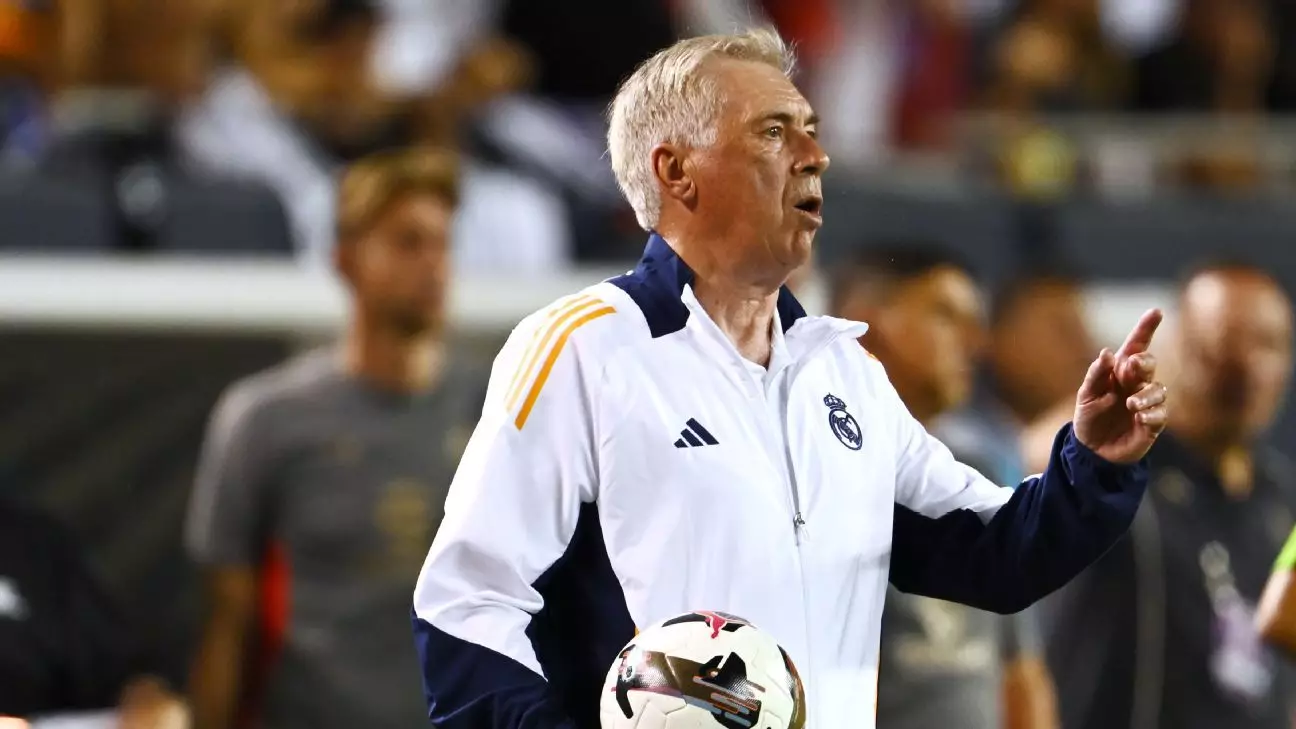In the current landscape of professional football, where the athletic toll on players has reached unprecedented heights, the discussions surrounding player welfare and match schedules have become increasingly urgent. Real Madrid’s coach Carlo Ancelotti recently highlighted a significant point: the potential willingness of players to reduce their wages if it means mitigating their grueling workloads. The expansion of competitions like the Champions League and the introduction of a restructured Club World Cup raise the specter of players participating in an alarming number of fixtures, with estimates indicating they could face up to 85 matches in a single season.
Ancelotti’s comments were made during a news conference and reflect a growing concern among players about their physical and mental fatigue. Football, he asserts, needs introspection and change, where the primary goal should revolve around enhancing players’ well-being by limiting game hours and, consequently, injury risks. The situation necessitates a serious conversation about finding a balance between commercial interests and player health, an issue rarely addressed adequately in the hyper-competitive sphere of football.
The dialogue surrounding player welfare extends beyond anecdotal observations, entering the realm of serious discussion over strike actions. Rodri, a midfielder for Manchester City, emphasized that players are nearing a crossroads regarding their workloads. Pending discussions among players, including endorsements from prominent figures like Real Madrid’s Thibaut Courtois and Dani Carvajal, pressurized governing bodies to reconsider the current match calendar. However, Ancelotti reminds everyone that the existing structure will likely remain unchanged for this season.
While these concerns are genuine, Ancelotti observes that the voices of coaches and players, despite their increasing volume, often go unheard in the monumental machinery of football scheduling. The players’ fatigue is palpable, and this underlines the pressing need for gradual reforms that consider their endurance, longevity, and future in the sport.
Current Team Dynamics: Ancelotti on Form and Strategy
Looking ahead, Ancelotti expressed a measured optimism about his team’s performance as they prepare for an upcoming LaLiga match against Espanyol. Following an impressive 3-1 victory against Stuttgart, the Madrid squad has shown glimpses of their potential, although Ancelotti acknowledges the room for improvement. His assessment that they are not yet operating at their peak capacity aligns with the usual seasonal trajectory—where teams tend to find their rhythm by late October or November.
A notable question arises around team strategy: Should there be a shift from the well-trodden 4-3-3 formation to a more balanced four-man midfield? Ancelotti dispels the notion that merely adding an extra midfielder guarantees balance. Instead, he emphasizes that achieving team equilibrium is a collective effort, where compactness and a willingness to make sacrifices are critical. This nuanced understanding of formation and tactics showcases Ancelotti’s managerial acumen, reaffirming his experience in navigating the complexities of elite football.
The Emergence of New Talent: Focus on Endrick and Camavinga
In a thrilling twist to Madrid’s future prospects, Ancelotti has indicated that burgeoning talent Endrick will be granted more starting opportunities in forthcoming matches. Despite his young age, the Brazilian forward has already demonstrated his capabilities, contributing goals in both LaLiga and the Champions League within a short period. Ancelotti praises the player’s humility and diligence, hinting at a promising integration into the team as his career progresses.
Moreover, the potential return of Eduardo Camavinga adds another layer of excitement to Madrid’s strategy moving forward. Ancelotti has confirmed that the French midfielder is progressing well in his recovery and is set to begin team training again. His return would be pivotal, offering depth and versatility to Madrid’s midfield and reaffirming Ancelotti’s commitment to fostering young talent while managing existing players’ workloads effectively.
As the conversation about player workload and financial adjustments unfolds, it is clear that structural changes are imperative to maintain the quality of the game and the well-being of athletes. The interplay between commercial success and the health of players should not be an afterthought but an inherent part of the football narrative. Ancelotti’s insights serve as a welcome reminder that the nature of the sport can evolve to protect its most valuable assets—its players. The future of football lies in striking that critical balance, ensuring both competitive integrity and player longevity within an increasingly demanding landscape.
